Note: This Article is a Work-In-Progress – Some parts of this guide are likely to be edited or restructured.
1. Branding & Design
Having a clear vision of your brand will make it much easier to make the right choices as we delve deeper into this guide.
Your store’s overall branding and design are vital things to consider when building an eCommerce website
It can be daunting to put together an idea of what your store is going to look like this early in the process.
For this reason, we’ve split this section into 3 parts:
The Product
Hopefully, you’ve already decided on what you’re going to sell – if you’re still trying to decide, here is a good list of trending dropshipping products for 2023.
Take a few moments to consider what kind of store your product will need. For example, if you’re selling clothing, you will need a way to display your products in various sizes and colors. However, if you’re selling digital products, your customers will need a way to download the products they’ve purchased from you.
With your product in mind, consider your target audience, as well as what they are looking for when they visit your site.
What do your visitors expect to feel when they reach your website?
Domain & Store name
A domain name is the web address that people type into their browsers to access your website. It’s an essential part of your website’s branding and is often the first thing people see when they visit your site. Choosing the right domain name will help establish your brand and make it easier for customers to find and remember your website.
When selecting a domain name, it’s important to choose one that is easy to spell and pronounce. Avoid using numbers or hyphens, as these can make it harder for people to remember your website’s address.
It’s also a good idea to use a domain name that reflects your brand and the products or services you offer. For example, if you sell handmade jewelry, a domain name like “www.HandmadeJewelry.com” would be a great choice.
In addition to choosing a memorable domain name, consider how it will fit with your overall branding strategy. Your domain name, along with your website’s design and content, should all work together to create a cohesive brand identity that resonates with your target audience.
Take a few minutes to come up with some domain/store name ideas before you continue. Your domain name might already be taken, so it’s good to have a few different ideas in mind.
Now that you’ve come up with a few domain names that are easy to spell and pronounce, reflect your brand, and fit with your overall branding strategy, you’ll need to register that domain name with a domain registrar. You won’t worry about registering your domain name until after you’ve chosen an eCommerce Hosting Provider.
Color Theory & Design
Knowing your color wheel and how to choose your brand’s colors is …!??!
dd

Analogous Schemes are comprised of 3 colors that are placed adjacent to each other on the Color Wheel.
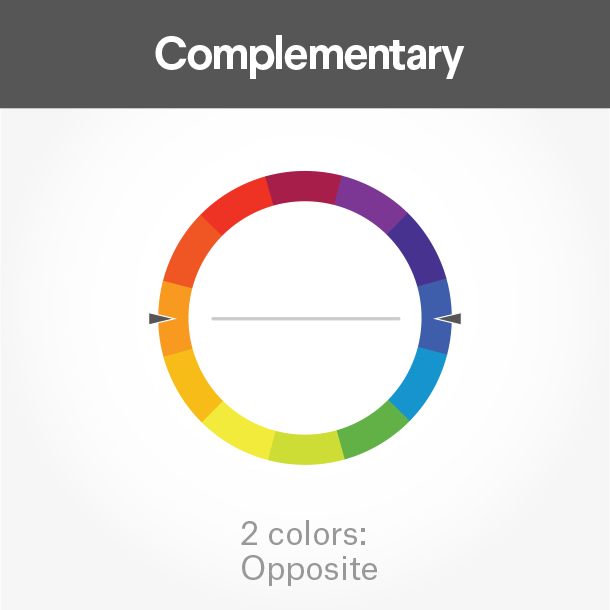
A Complementary Scheme is made up of two complementary colors – meaning they are placed opposite each other on the Color Wheel.
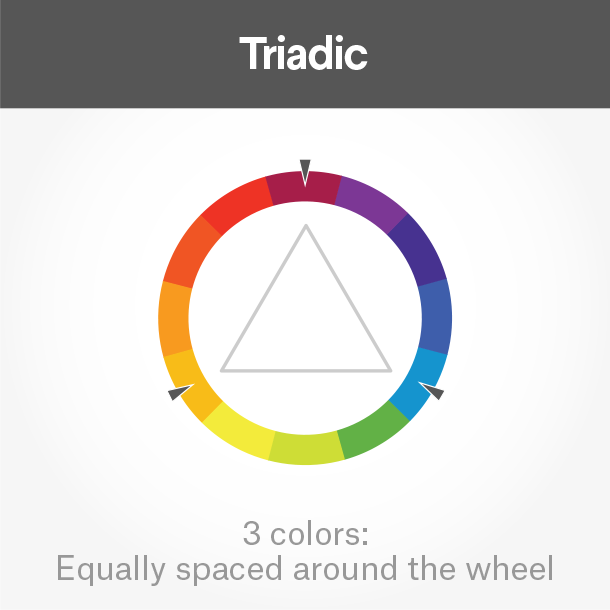
A Triadic Color Scheme uses 3 colors that are evenly spaced out on the Color Wheel.
Other color schemes not mentioned here that you could look into include Split-Complementary, Tetradic Color Schemes, and more.
Use the image below to identify which of these emotions are most in tune with your brand and choose your colors wisely!
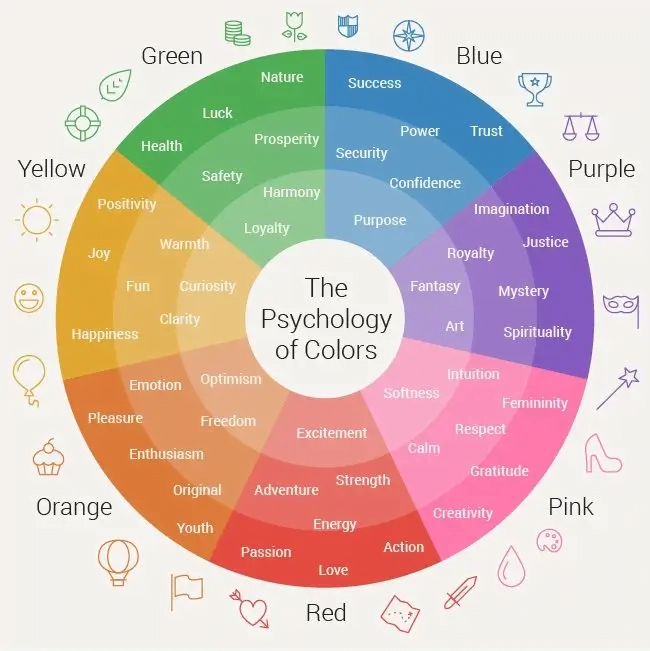
Once you’re confident you’ve decided on all of the things we’ve mentioned until now, you’re ready to move on to the next part of this guide.
2. Selecting your eCommerce Platform
We could be building an eCommerce website from scratch. However, using an eCommerce Provider instead will save us a lot of time and headscratching!
There’s an overwhelming amount of options when it comes to eCommerce platforms – and you want your website to be in safe hands. There are a lot of things to keep in mind when deciding who is going to host your store: Uptime, Security, Ease-of-Use, Encryption, customer support, and much, much more.
We’ve narrowed it down to the 2 Best eCommerce hosting providers for you:
Both Shopify and Zyro offer a range of high-quality tools and services. Loosely speaking, Zyro is better suited for one-product stores, whereas Shopify is the way to go if you’re planning on having multiple products, multiple stores, or think you’ll be making a lot of sales.

- STARTS AT $29/MONTH
- BUILT-IN PAYMENT PROCESSOR
- FREE MARKETING TOOLS
- EASY-TO-USE WEBSITE BUILDER
Zyro offers a Free Domain name when you sign up for a paid plan. They offer a free plan and a whole range of AI-Powered tools to help you create a logo as well as generate a lot of content for you.

- STARTS AT $2.59/MONTH!
- FREE PLAN AVAILABLE
- AI BRANDING TOOLS
- SET UP IN MINUTES
Shopify definitely our favorite – However, if you’re just starting out and don’t want to start spending money on hosting yet, feel free to follow along with Zyro. The setup process is quite similar across all of the providers.
3. Setting up all the necessary pages
Now, it’s finally time to set up your website by adding the necessary pages and features.
This part might differ slightly depending on which hosting provider you chose – but mostly it’s going to be pretty straightforward.
There are quite a few things we need to do here, so I’ve prepared a Copy/Paste Document for you that contains all the necessary information for the pages we’ll be creating. This will save us a lot of time!
Link to the Copy/Paste eCommerce Website Blueprint
We’ll be using the Copy/Paste Blueprint to create and fill out the pages I’ve listed below. Each of the sections in the document I’ve linked is separated by a “<- / -> ”
Create each page and follow the steps listed as you go through the steps below:
Now that you’ve created and filled out those pages it’s time to create the necessary product page.
Add multiple High-Quality images of your product. If applicable, add alternative images of your product in different sizes or colors – it’s also great if you have videos of your product you can upload, as this is known to increase the likelihood of visitors buying your product.
Make sure to include detailed information about the product’s features, specifications, pricing, and anything else you think might be relevant.

The last thing we need to set up now is a shopping cart so customers can add items to their cart as they browse your website. The shopping cart should be easy to access and use, and should allow customers to easily adjust the quantity of items in their cart.
Check one more time to see if there’s anything you can change to improve the overall look or make it feel more consistent with your brand -Now test to make sure that each of the pages and features is working properly.
4. Set up the checkout process
Once customers have added items to their cart, they’ll need a way to way to check out and pay for their purchases!
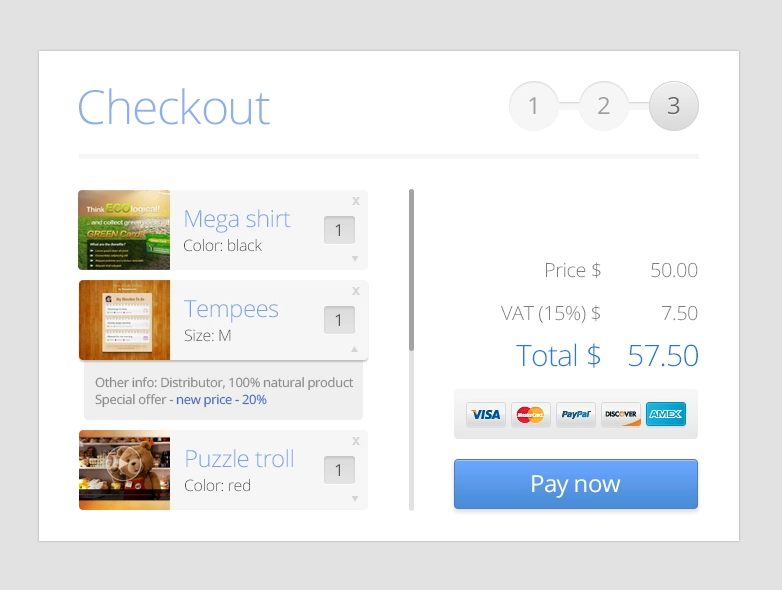
We’ve put together this handy list to make sure you’re setting up your checkout process to maximize sales. Here are our 5 top suggestions:
Make sure it’s mobile friendly
A lot of your traffic will come from people on their phones, so let’s make sure the check-out process is easy and simple for mobile users.
Remove additional costs if any
According to Shopify, 55% of Shoppers abandon their online carts because costs are too high.
Remove any additional costs and try to keep your products as cheap as possible – this is especially important in the early phases when we’re still trying to get customers.
Allow multiple payment methods
Make sure visitors have a number of ways they can pay for their products! PayPal, Credit/Debit Card payment, Apple/Google Pay and digital wallets are some good examples.

It’s recommended you have at least 3 different Payment Gateways set up and tested to maximize your chances of having all of your potential buyers covered.
Set up 1-Click Checkout

Some visitors are ready to pay and go being able to check out with one click will ensure your buyers have less time to begin doubting their decision to go ahead.
Allow buyers to check out as Guests
Save your visitors the hassle of having to go through the process of registering a new account. Some customers prefer to check out as guest when possible – and a smaller subset of them will cancel their sale if they can’t check out as guest.
It’s always best to have all of your angles covered, so make sure this is enabled!
Remove Clutter and Distractions
Double-check to ensure your checkout page is free of clutter and distractions. The cleaner and tidier it looks, the better it’s going to be for your sales.
5. Testing Time!
Congratulations on getting this far!
Now it’s time to test our website to make sure everything is working properly and responding smoothly for our visitors.
The best way to do this is by going through the website from the visitor’s perspective – clicking and exploring the site, as they might.
We’ve put together a list of specific ways to test your eCommerce website:
- Test the shopping cart and checkout process to make sure customers can easily add products to their cart and complete the checkout process.
- Check that the payment gateway is working properly and that customers can pay for their purchases securely.
- Test the various pages on your website: Homepage, FAQ, Contact page, and all your Product pages
- Check that all the links on your website are working and go to the correct pages.
- Test the website on different devices: Laptop/Computers, Mobiles and Tablets
- Check that the website loads quickly and efficiently, as slow loading times can be a major turn-off for customers and also rank you lower on Google’s search results.
- Test the customer service and support features of your website, such as the contact form or live chat, to ensure they are working properly and that you can easily respond to customer inquiries.
- Ask friends or colleagues to test the website and provide feedback on their experience, including any issues or suggestions for improvement.
After having tested everything and fixed the various issues that come up, you’re ready to go to the next part of this guide!
6. You’re live! Now let’s promote!
If you’ve followed all of the previous steps, it should only be a matter of getting your target audience to visit your store now.
There are several ways to do this – but we’re going to focus on five of these methods and complete them to perfection.
We’ve listed the 5 main ways for promoting your eCommerce website, starting with..
Social Media Marketing

Having social media accounts set up for your business will grant your store more authenticity.
Take the time to create a presence for your store on the various platforms (Twitter, Instagram, Pinterest, etc) available, make sure they are linked to from your website, and get busy growing those accounts!
It might take some time, but people will be much more likely to trust your store when they see you have an active and engaging social media presence. Use tags and hashtags to make your posts more discoverable, and make it a habit to post content several times every day.
Search Engine Optimization (SEO)

Using Search Engine Optimization is a must by today’s standards. By optimizing your website’s content and structure to make it more appealing to search engines, your website and your products will rank higher in search results and attract more organic traffic – all for free!
Paid Advertising
You might find yourself getting a few sales through organic traffic, but in eCommerce, nothing provides continuous sales like Paid Ads. When it comes to getting your website in front of the people actively searching for a product like the one you’re selling, ads will help you reach your target audience like nothing else.
If you’re seeing some profits coming in already, or you’re willing to invest in giving your store a kickstart (highly recommended), paid ads are going to help you reach a larger audience. This can include pay-per-click (PPC) ads on Search Engines, displaying ads on other websites, or even sponsored posts on social media.
Influencers

Many influencers are willing to promote your store on their social media channels in exchange for a free product. Getting reviews and having influencers showing off your product is a guaranteed way to boost sales.
As you’re growing the presence of your Social Media channels, always keep an eye out for popular channels that could potentially advertise or feature your product.
Email Marketing
This method of marketing becomes more useful in the later stages. First, make sure visitors can subscribe to your Email Newsletter through a signup form or a popup.
Once enough people are satisfied with your services and you’ve gathered a healthy number of subscribers you can send them all an email containing a special offer, a discount code, or news about a new product!
There are several tools out there that make this sort of thing much easier. My personal recommendation to you is a tool called Benchmark.
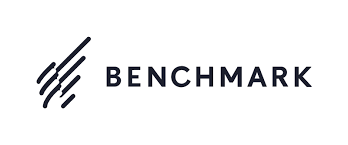
One of the main reasons why I always recommend Benchmark is that they have a Free-Forever Plan. You can just sign up and get started – and there’s no need to pay anything at all until you exceed 3500 Sign-Ups.

Benchmark provides an email-form builder that you can use for free to create your popup form exactly as you imagine it. You can then copy/paste the HTML code directly into your website and set it to appear when a button is clicked. Whenever a visitor signs up through this form, Benchmark will store their details for you to use in your future email marketing campaigns.

If you’re on top of all of these marketing strategies, there should be nothing keeping you from getting traffic to your site.
7. Provide Great Customer Service
The next thing on our list is making sure excellent customer service and support is available whenever it’s needed.

This is important for several reasons:
Loyalty & Trust
Good customer service is vital for building trust and loyalty with your customers. When customers know that they can count on your rapid help and support, it will encourage them to come back to your site and recommend it to others in the future.
Prevent Returns & Other Issues
A portion of returns and bad reviews come from buyers not knowing how to use the product correctly, or feeling like your company is not responsive enough when it comes to answering their questions.
Some of this can be resolved by setting up your FAQ Page properly, and writing an in-depth product description. This being said, there will always be buyers with questions!
Preventing customer complaints and bad reviews is definitely a priority when launching!
Improving the overall Customer Experience
The customer’s confidence and the quality of their experience are greatly affected by how your store looks. A positive and friendly experience with customer support is often the cherry on top that gets you high-quality reviews, which will ensure you keep getting more interested buyers.
By following the steps below, you’ll be certain you’re providing excellent customer service and support on your eCommerce website.
- Make it easy for customers to contact you. Provide a clear and prominent link to a contact form or email address on every page of your website.
- Respond to customer inquiries quickly and professionally. Aim to respond to all customer inquiries within 24 hours, and make sure to provide helpful and courteous responses.
- Offer multiple ways for customers to get in touch. In addition to a Contact Form or email address, consider offering Live Chat or Phone Support so customers can get help in the way that is most convenient for them.
- Have clear and detailed information about your policies, including Shipping, Returns, and Refunds. This will help customers understand their rights and what to expect when they make a purchase from your website.
- If you decide on offering Live Chat for your customers, have it clearly visible on the bottom right to make it easy to find.
- Train your customer service team on your products and policies. Make sure they are knowledgeable and able to provide accurate and helpful information to customers.
You’ve reached the end of our Guide on How to Build a Successful eCommerce Website.
That’s all for now! I hope you found this helpful.
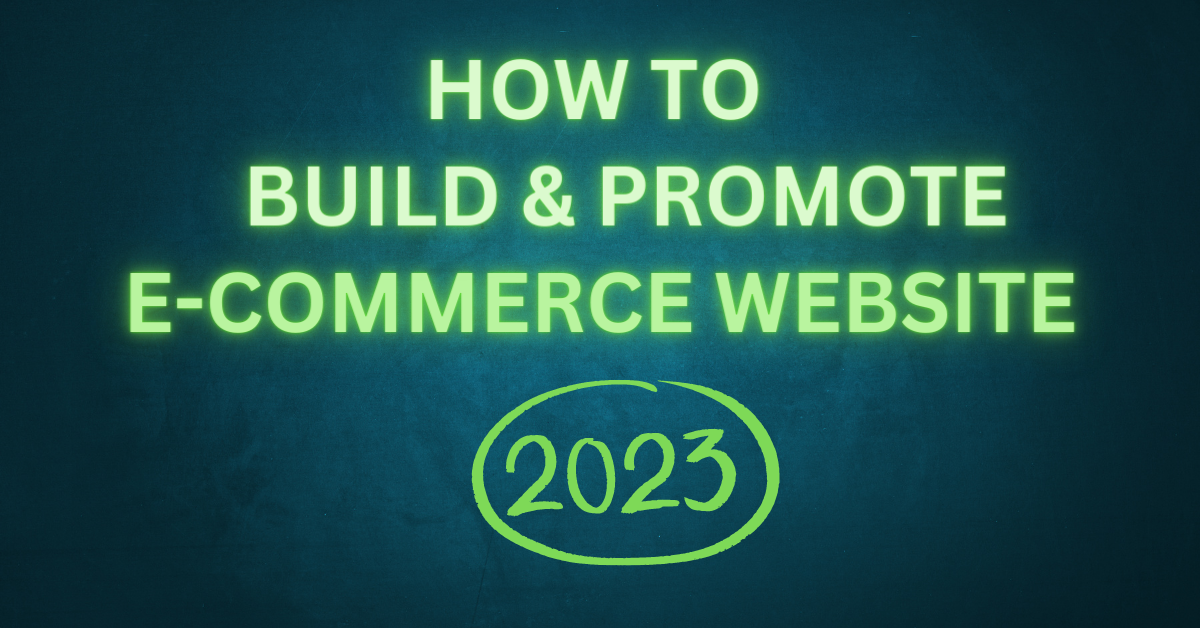
I could not resist commenting. Well written!
Thank you!
I very delighted to find this internet site on bing, just what I was searching for as well saved to fav
I quite like reading through an article that can make people think. Also, thank you for allowing for me to comment!
I am truly thankful to the owner of this web site who has shared this fantastic piece of writing at at this place.